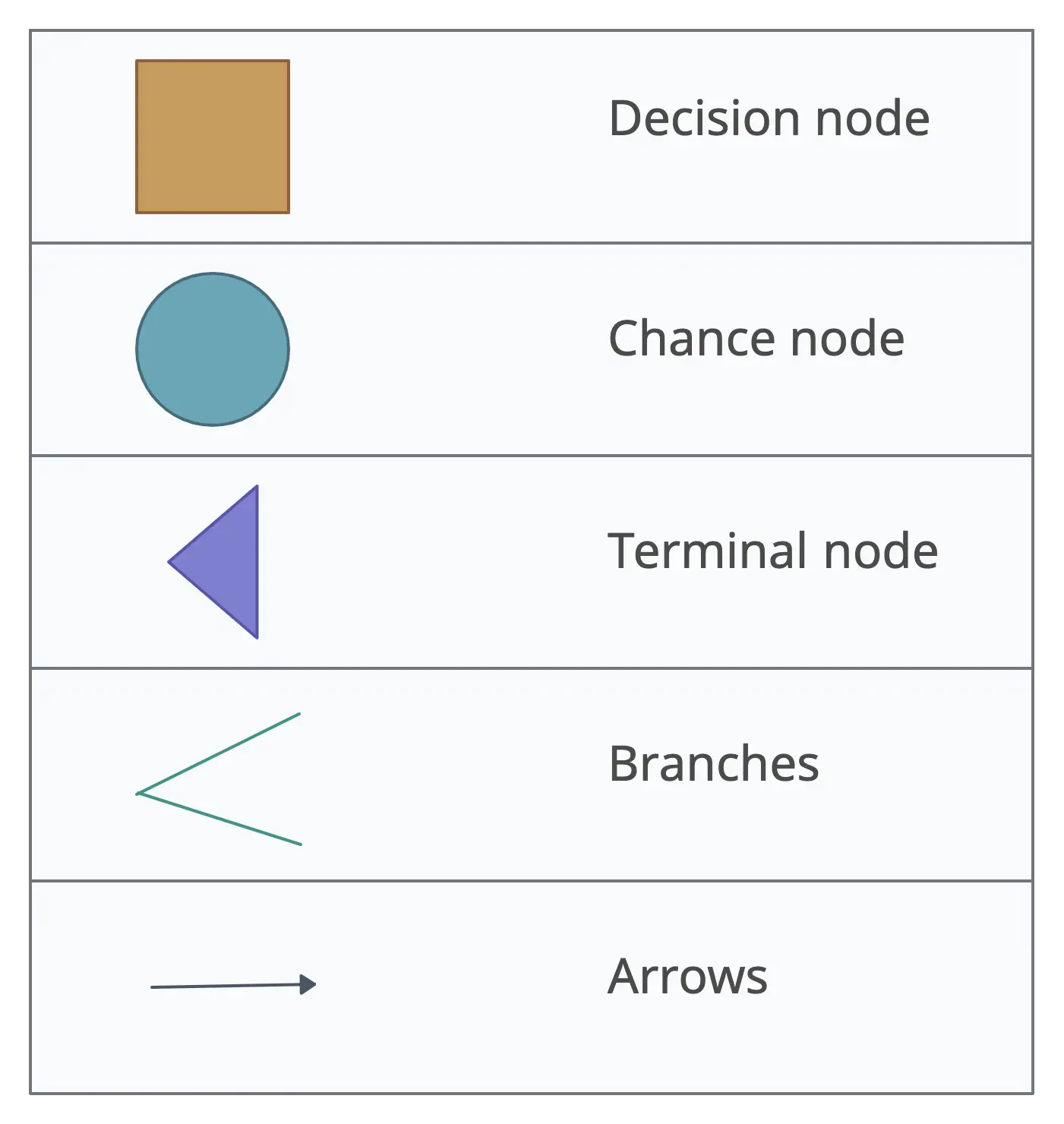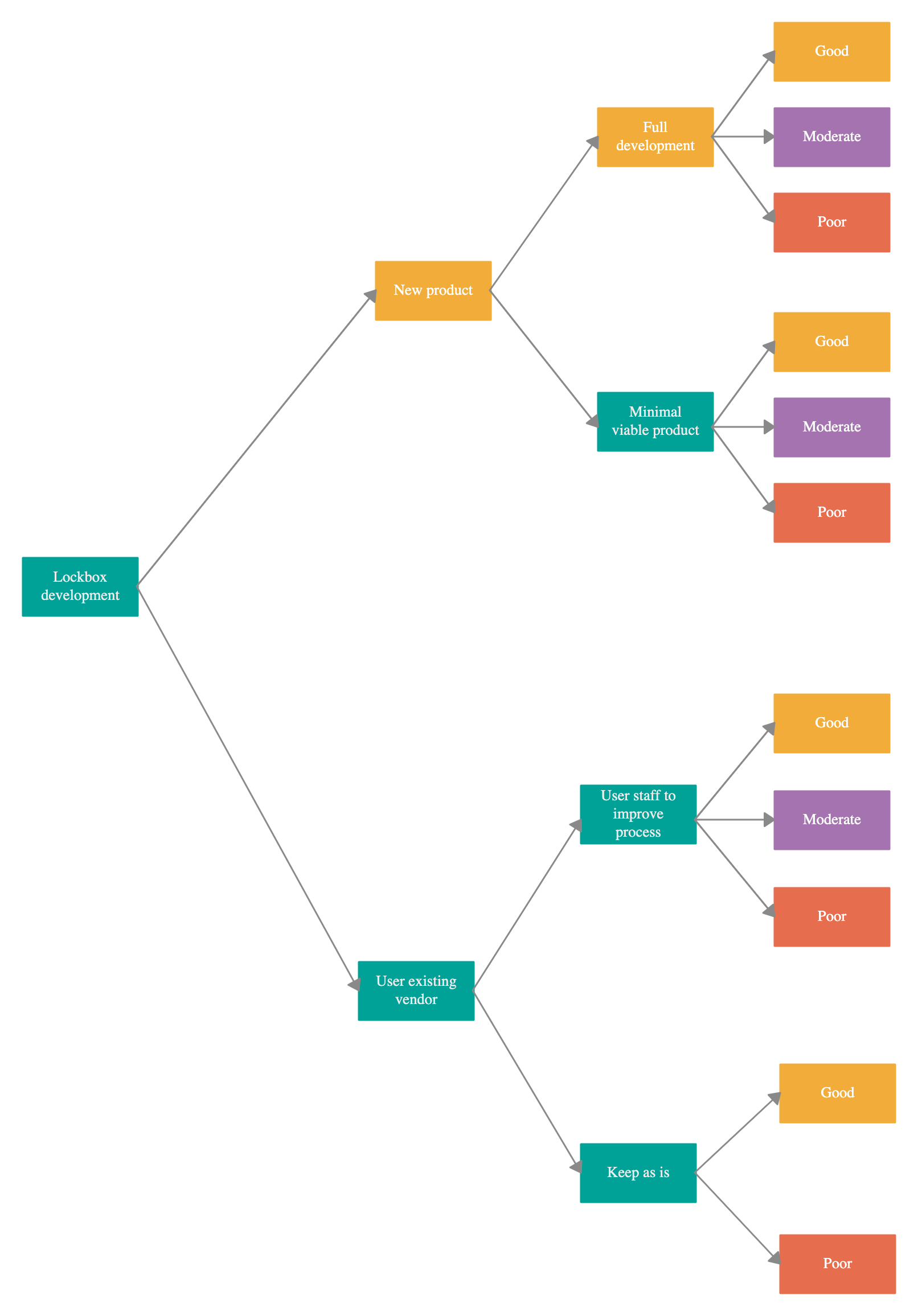

Today, in our data-driven world, it’s more important than ever to make well-informed decisions. Whether you work with data, analyze business trends, or make important choices in any field, understanding and utilizing decision trees can greatly improve your decision-making process. In this blog post, we will guide you through the basics of decision trees, covering essential concepts and advanced techniques, to give you a comprehensive understanding of this powerful tool.
Let’s start with the definition of Decision Tree.
A decision tree is a graphical representation that outlines the various choices available and the potential outcomes of those choices. It begins with a root node, which represents the initial decision or problem. From this root node, branches extend to represent different options or actions that can be taken. Each branch leads to further decision nodes, where additional choices can be made, and these in turn branch out to show the possible consequences of each decision. This continues until the branches reach leaf nodes, which represent the final outcomes or decisions.
The decision tree structure allows for a clear and organized way to visualize the decision-making process, making it easier to understand how different choices lead to different results. This is particularly useful in complex scenarios where multiple factors and potential outcomes need to be considered. By breaking down the decision process into manageable steps and visually mapping them out, decision trees help decision-makers evaluate the potential risks and benefits of each option, leading to more informed and rational decisions.
Decision trees are useful tools in many fields like business, healthcare, and finance. They help analyze things systematically by providing a simple way to compare different strategies and their likely impacts. This helps organizations and individuals make decisions that are not only based on data but also transparent and justifiable. This ensures that the chosen path aligns with their objectives and constraints.
Understanding the symbols used in a decision tree is essential for interpreting and creating decision trees effectively. Here are the main symbols and their meanings:

It’s important to remember the different types of decision trees: classification trees and regression trees. Each type has various algorithms, nodes, and branches that make them unique. It’s crucial to select the type that best fits the purpose of your decision tree.
Classification trees are used when the target variable is categorical. The tree splits the dataset into subsets based on the values of attributes, aiming to classify instances into classes or categories. For example, determining whether an email is spam or not spam.
Regression trees are employed when the target variable is continuous. They predict outcomes that are real numbers or continuous values by recursively partitioning the data into smaller subsets. For example, predicting the price of a house based on its features.
Follow these steps and principles to create a robust decision tree that effectively predicts outcomes and aids in making informed decisions based on data.
Reading a decision tree involves starting at the root node and following the branches based on conditions until you reach a leaf node, which represents the final outcome. Each node in the tree represents a decision based on an attribute, and the branches represent the possible conditions or outcomes of that decision.
For example, in a project management decision tree, you might start at the root node, which could represent the choice between two project approaches (A and B). From there, you follow the branch for Approach A or Approach B. Each subsequent node represents another decision, such as cost or time, and each branch represents the conditions of that decision (e.g., high cost vs. low/medium cost).
As you continue following the branches, you eventually reach a leaf node, which gives you the final outcome based on the path you took. For instance, if you followed the path for Approach A with high cost, you might reach a leaf node indicating project failure. Conversely, Approach B with a short time might lead you to a leaf node indicating project success.
Follow these best practices to develop and deploy decision trees that are reliable and effective tools for making informed decisions across various domains.
A decision tree simplifies the decision-making process in several key ways:
Here are some decision tree examples to help you understand them better and get a head start on creating them. Explore more examples with our page on decision tree templates.
This template helps make informed decisions by systematically organizing and analyzing complex information, ensuring clarity and consistency in the decision-making process.
This Decision Tree helps banks decide if they should launch a new financial product by predicting outcomes based on market demand and customer interest. It guides banks in assessing risks and making informed decisions to meet market needs effectively.

The tree shows possible outcomes based on the severity and likelihood of each risk, guiding teams to make informed decisions that keep projects on track and within budget.
Use this simple decision tree to analyze choices systematically and clearly before making a final decision.
Understanding these advantages and disadvantages helps in determining when to use decision trees and how to mitigate their limitations for effective machine learning applications.
| Advantages | Disadvantages |
| Easy to interpret and visualize. | Can overfit complex datasets without proper pruning. |
| Can handle both numerical and categorical data without requiring data normalization. | Small changes in data can lead to different tree structures. |
| Captures non-linear relationships between features and target variables effectively. | Tends to favor dominant classes in imbalanced datasets. |
| Automatically selects significant variables and feature interactions. | May struggle with complex interdependencies between variables. |
| Applicable to both classification and regression tasks across various domains. | Can become memory-intensive with large datasets. |
Decision tree analysis is a method used in data mining and machine learning to help make decisions based on data. It creates a tree-like model with nodes representing decisions or events, branches showing possible outcomes, and leaves indicating final decisions. This method helps in evaluating options systematically by considering factors like probabilities, costs, and desired outcomes.
The process begins with defining the decision problem and collecting relevant data. Algorithms like ID3 or C4.5 are then used to build the tree, selecting attributes that best split the dataset to maximize information gain. Once constructed, the tree is analyzed to understand relationships between variables and visualize decision paths.
Decision tree analysis is commonly used in;
Business decision making:
Healthcare:
Finance:
Marketing:
Environmental science:
Risk assessment:
Diagnostic reasoning:
While decision tree analysis offers clarity and flexibility, it can become too specific if not pruned properly and is influenced by variations in input data. Overall, decision tree analysis is valuable for pulling out useful insights from complicated datasets to help with decision-making.
A decision tree is an invaluable tool for simplifying decision-making processes by visually mapping out choices and potential outcomes in a structured manner. Despite their straightforward approach, decision trees offer robust support for strategic planning across various domains, including project management. While they excel in clarifying decisions and handling different data types effectively, challenges like overfitting and managing complex datasets should be considered. Nevertheless, mastering decision tree analysis empowers organizations to make well-informed decisions by systematically evaluating options and optimizing outcomes based on defined criteria.
Join over thousands of organizations that use Creately to brainstorm, plan, analyze, and execute their projects successfully.